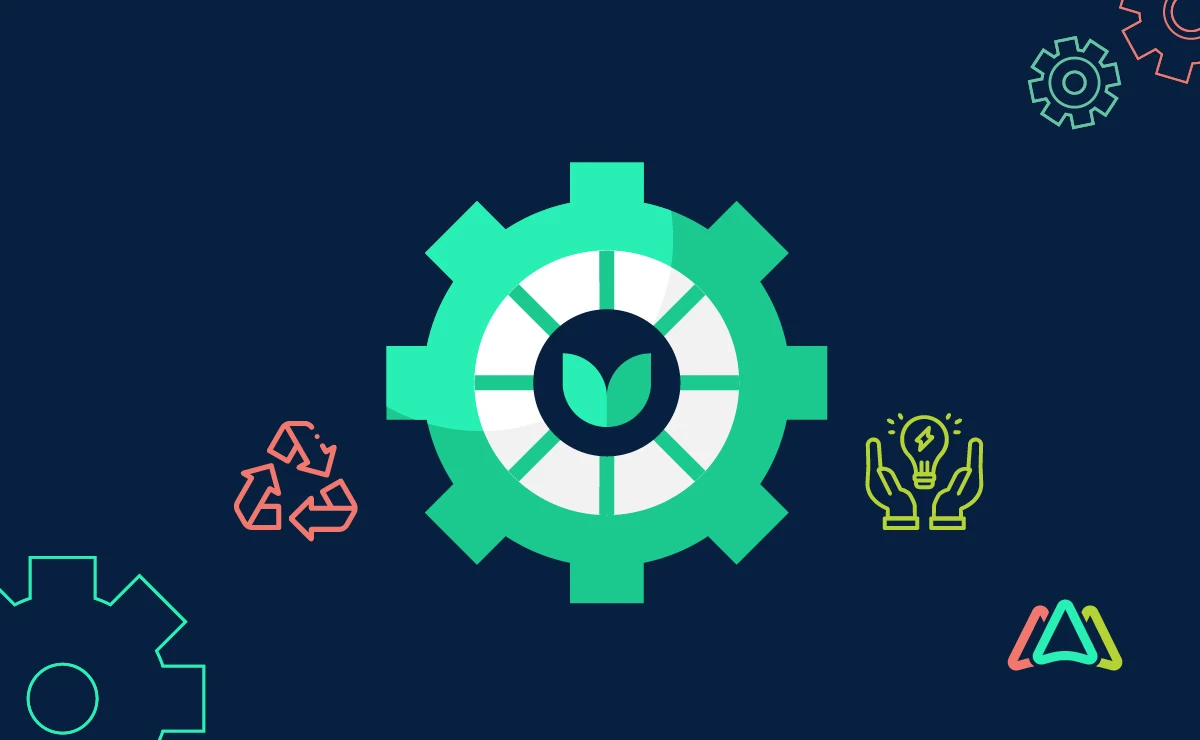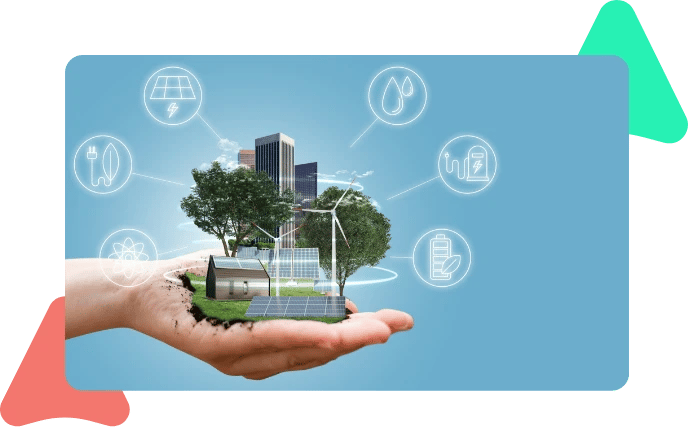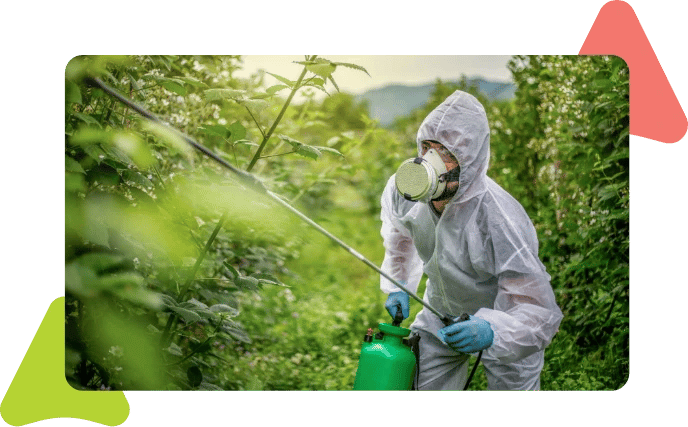
Exploring Green Maintenance to Build Sustainable Eco-friendly Facilities
Green maintenance represents a revolutionary paradigm shift in the way we care for our facilities, spaces, and equipment. At its core, green maintenance involves the implementation of environmentally conscious and sustainable practices to reduce ecological impact and promote long-term well-being. Unlike traditional maintenance approaches, which often contribute to resource depletion and environmental degradation, green maintenance focuses on preserving and enhancing the natural environment while ensuring the functionality and longevity of assets.
The importance of embracing sustainable practices in maintenance cannot be overstated in our current era of environmental awareness and responsibility. Traditional maintenance methods have historically been resource-intensive, leading to increased energy consumption, waste generation, and a negative impact on ecosystems. Green maintenance, on the other hand, aligns with the principles of environmental stewardship, conservation, and efficiency.
By integrating sustainable practices into maintenance routines, businesses, and individuals can significantly reduce their carbon footprint, conserve vital resources, and contribute to the overall health of the planet. This shift is not just an ethical choice; it is a strategic move towards a more resilient and environmentally responsible future.
This article aims to unravel the multifaceted concept of green maintenance, providing readers with comprehensive insights into the principles, strategies, and benefits associated with this eco-friendly approach. It will cover the core components of green maintenance, exploring energy-efficient systems, water conservation strategies, and the use of eco-friendly cleaning and maintenance products.
What is Green Maintenance?
Green maintenance is a holistic and forward-thinking approach to maintaining facilities, spaces, and equipment that prioritizes environmental sustainability. It encompasses a set of practices aimed at minimizing the ecological footprint of maintenance activities while fostering efficiency, resilience, and harmony with the natural world. Unlike traditional maintenance, which often operates within a linear "take, make, dispose" model, green maintenance adopts circular and regenerative principles that strive to leave a positive impact on the planet.
The scope of green maintenance extends across various domains, including facility management, groundskeeping, equipment upkeep, and more. It seeks to integrate eco-friendly methodologies and technologies into everyday maintenance routines, addressing not only the immediate needs of assets but also the long-term health of the environment.
Key Principles of Green Maintenance
1. Reduce, Reuse, Recycle
Central to green maintenance is the mantra of "reduce, reuse, recycle." This principle emphasizes minimizing waste by reducing consumption, repurposing materials whenever possible, and recycling resources to prevent them from ending up in landfills. By adopting a circular economy mindset, green maintenance strives to create a closed-loop system where resources are conserved and reused throughout their lifecycle.
2. Energy Efficiency
Energy efficiency stands as a cornerstone in the principles of green maintenance. This involves optimizing the energy consumption of maintenance activities, adopting energy-efficient technologies, and implementing smart systems that minimize energy waste. By focusing on energy efficiency, green maintenance not only reduces operational costs but also mitigates the environmental impact associated with excessive energy consumption.
3. Eco-friendly Materials and Products
Green maintenance prioritizes the use of eco-friendly materials and products throughout its processes. This includes choosing sustainable and responsibly sourced materials, as well as utilizing cleaning agents, lubricants, and maintenance products that have minimal impact on the environment. By opting for environmentally friendly alternatives, the overall ecological footprint of maintenance activities is significantly reduced.
4. Biodiversity Conservation
Incorporating biodiversity conservation into maintenance practices is another vital aspect of green maintenance. This principle emphasizes creating and maintaining landscapes that support local ecosystems, fostering habitat diversity, and promoting the well-being of flora and fauna. Green maintenance recognizes that a harmonious relationship with nature contributes to the overall health and resilience of our surroundings.
Benefits of Implementing Green Maintenance Practices
The adoption of green maintenance practices yields a multitude of benefits, both for the environment and the entities implementing them. These advantages include:
- Reduced Environmental Impact: Green maintenance minimizes resource consumption, waste generation, and pollution, leading to a smaller overall environmental footprint.
- Cost Savings: Energy-efficient practices and reduced resource consumption often result in significant cost savings over time, contributing to long-term financial sustainability.
- Improved Reputation: Businesses and individuals that prioritize green maintenance are viewed as environmentally responsible, contributing to a positive public image and stakeholder perception.
- Regulatory Compliance: As environmental regulations become more stringent, adopting green maintenance practices helps ensure compliance with evolving standards and reduces the risk of legal issues.
- Improved Health and Well-being: Green maintenance practices contribute to healthier indoor and outdoor environments, positively impacting the well-being of occupants and users.
In essence, the principles of green maintenance are rooted in the pursuit of a sustainable and harmonious coexistence with our surroundings, offering a pathway to a more resilient and ecologically balanced future.
Sustainable Practices in Facility Maintenance
1. Energy-Efficient Systems and Equipment
Adopting energy-efficient systems and equipment is a cornerstone of green practices. This not only contributes to reduced operational costs but also aligns with the broader goal of minimizing the carbon footprint associated with maintenance activities.

1.1 Importance of Energy Audits
Embarking on energy audits is an important first step toward understanding and optimizing energy consumption within facilities. These audits identify areas of inefficiency, allowing maintenance teams to pinpoint opportunities for improvement. By analyzing energy usage patterns, facilities can implement targeted strategies to enhance overall energy efficiency.
1.2 Upgrading to Energy-Efficient Appliances
One of the most impactful ways to reduce energy consumption is through the strategic upgrade of appliances and equipment. Replacing outdated, energy-intensive machinery with modern, energy-efficient alternatives not only lowers operational costs but also contributes to the facility's overall sustainability goals.
1.3 Implementing Renewable Energy Sources
The integration of renewable energy sources, such as solar panels or wind turbines, further elevates the sustainability of facility maintenance. By harnessing clean, renewable energy, facilities can not only meet their energy needs but also contribute surplus energy back to the grid, fostering a more sustainable energy ecosystem.
2. Water Conservation Strategies
Water conservation is a critical aspect of sustainable facility maintenance, especially in regions facing water scarcity and drought conditions. Implementing water-efficient practices ensures responsible resource management.

2.1 Low-flow Fixtures and Water Recycling
Installing low-flow fixtures, such as faucets and toilets, helps minimize water usage within facilities. Additionally, water recycling systems can be employed to repurpose and reuse water for non-potable purposes like irrigation and cooling systems, reducing the demand for fresh water.
2.2 Rainwater Harvesting
Harnessing rainwater for facility use is an eco-friendly practice that conserves water resources. Rainwater harvesting systems collect and store rainwater, providing an alternative water source for landscaping, flushing toilets, and other non-potable applications.
2.3 Smart Irrigation Systems
Utilizing smart irrigation systems with sensors and controllers allows facilities to optimize watering schedules based on real-time weather conditions and soil moisture levels. This precision in irrigation minimizes water wastage and promotes the health of landscaping while reducing the environmental impact.
3. Eco-friendly Cleaning and Maintenance Products
The choice of cleaning and maintenance products significantly influences the environmental impact of facility upkeep. Green maintenance emphasizes the use of eco-friendly alternatives that minimize harm to ecosystems and occupants.

3.1 Green Cleaning Supplies
Switching to environmentally friendly cleaning supplies, which are biodegradable and free from harsh chemicals, promotes a healthier indoor environment. These products effectively clean surfaces without leaving harmful residues, contributing to improved indoor air quality.
3.2 Environmentally Friendly Lubricants and Chemicals
Opting for lubricants and chemicals that are environmentally friendly and biodegradable ensures that maintenance practices do not introduce harmful substances into the ecosystem. These alternatives perform effectively while minimizing the ecological footprint associated with their use.
3.3 Sustainable Equipment Maintenance Practices
Implementing sustainable equipment maintenance practices involves extending the lifespan of equipment through preventive measures, efficient repairs, and responsible disposal of components. Regular maintenance not only reduces the need for replacements but also lessens the environmental impact associated with manufacturing and disposing of new equipment.
Green Landscaping and Outdoor Maintenance
1. Sustainable Landscape Design
Green landscaping goes beyond aesthetics; it involves a conscientious approach to creating and maintaining outdoor spaces that blend with the environment. By incorporating sustainable landscape design principles, facilities can not only enhance their visual appeal but also contribute positively to local ecosystems.

1.1 Native Plant Selection
Choosing native plants for landscaping has numerous ecological benefits. Native species are adapted to the local climate, requiring less water and maintenance. They also support local wildlife by providing habitat and food sources. Native plant landscaping fosters biodiversity and helps preserve the natural balance of ecosystems.
1.2 Drought-Tolerant Landscaping
In regions susceptible to water scarcity, adopting drought-tolerant landscaping practices is essential. This involves selecting plants that can thrive with minimal water requirements, reducing the need for irrigation. Mulching, soil improvement, and strategic plant placement further enhance water retention in the soil, promoting the health of the landscape.
1.3 Permeable Surfaces
Replacing traditional impermeable surfaces, such as concrete, with permeable alternatives allows rainwater to penetrate the soil, reducing runoff and preventing soil erosion. Permeable surfaces, like permeable pavers or porous asphalt, facilitate groundwater recharge and contribute to sustainable water management.
2. Integrated Pest Management (IPM)
Integrated Pest Management (IPM) is a holistic approach to pest control that prioritizes environmentally friendly methods, minimizing the use of harmful chemicals. This strategy focuses on prevention, monitoring, and the use of natural controls to manage pests effectively.

2.1 Non-toxic Pest Control Methods
Green landscaping promotes the use of non-toxic pest control methods, such as introducing beneficial insects or employing natural substances like neem oil or diatomaceous earth. These alternatives target pests while minimizing harm to beneficial organisms and the surrounding ecosystem.
2.2 Beneficial Insects and Natural Predators
Encouraging the presence of natural predators and beneficial insects helps maintain a balanced ecosystem in outdoor spaces. Ladybugs, predatory beetles, and parasitic wasps, for example, can control pest populations naturally, reducing the need for chemical interventions.
2.3 Organic Fertilizers
Green landscaping embraces the use of organic fertilizers derived from natural sources, such as compost or well-rotted manure. These fertilizers nourish the soil, promote plant health, and contribute to a sustainable nutrient cycle without the negative environmental impacts associated with synthetic fertilizers.
3. Outdoor Lighting Efficiency
Efficient outdoor lighting not only enhances safety and aesthetics but also plays an important role in reducing energy consumption and light pollution.

3.1 LED Lighting
Light Emitting Diode (LED) lighting is a key element in green outdoor lighting. LEDs are energy-efficient, have a longer lifespan, and emit less heat than traditional lighting sources. By transitioning to LED technology, outdoor spaces can achieve significant energy savings while maintaining optimal illumination.
3.2 Motion Sensors and Timers
Installing motion sensors and timers for outdoor lighting ensures that lights are only active when needed. Motion sensors can detect movement, activating lights as necessary, while timers can be programmed to turn lights off during specific periods, reducing unnecessary energy consumption.
3.3 Dark Sky Compliance
Dark Sky Compliance focuses on minimizing light pollution by directing and shielding outdoor lighting. By reducing glare, outdoor spaces contribute to preserving the natural darkness of the night sky. Shielded fixtures and thoughtful placement help minimize the environmental impact of outdoor lighting while maintaining a visually appealing and functional outdoor environment.
Incorporating these sustainable practices into landscaping and outdoor maintenance not only supports environmental conservation but also creates outdoor spaces that are resilient, visually appealing, and contribute positively to the surrounding ecosystem.
Challenges and Solutions
1. Common Obstacles in Adopting Green Maintenance Practices
While the benefits of green maintenance are significant, the adoption of sustainable practices faces several common challenges. Recognizing and understanding these obstacles is important for organizations and individuals aiming to transition toward more environmentally responsible maintenance.
- Initial Cost Concerns: One of the primary challenges is the perception of higher upfront costs associated with green technologies and practices. The initial investment required for energy-efficient systems or eco-friendly products can deter some from making the switch.
- Lack of Awareness: Limited knowledge about the benefits of green maintenance practices can hinder widespread adoption. Without a clear understanding of the positive environmental and financial impacts, organizations may be hesitant to change established routines.
- Resistance to Change: Resistance to change is a pervasive challenge in any industry. Employees and decision-makers may resist adopting new maintenance practices due to fear of disruption, unfamiliarity, or perceived inconvenience.
- Limited Availability of Green Products: In some regions, the availability of eco-friendly maintenance products may be limited. This can be a barrier for those looking to make sustainable choices but facing challenges in sourcing green alternatives.
2. Strategies to Overcome Resistance and Barriers
To address these challenges, proactive strategies can be implemented to encourage the adoption of green maintenance practices:
- Demonstrating Return on Investment (ROI): Providing clear evidence of the long-term cost savings associated with green maintenance practices can alleviate concerns about initial costs. Highlighting reduced energy bills, lower maintenance expenses, and potential government incentives can make a compelling case for adopting sustainable practices.
- Education and Training Programs: Conducting comprehensive education and training programs for employees at all levels helps overcome the lack of awareness. Providing information about the environmental benefits, cost savings, and positive impacts on health and well-being creates a more informed and supportive workforce.
- Engaging Leadership: Securing commitment from top leadership is vital in overcoming resistance to change. Leaders can set the tone for the organization's environmental initiatives, emphasizing the importance of sustainability and guiding the implementation of green maintenance practices.
- Collaboration and Networking: Building partnerships with suppliers and industry peers can address challenges related to the availability of green products. Collaborative efforts can also provide insights into successful strategies, share best practices, and create a supportive network for organizations transitioning to green maintenance.
3. Government Incentives and Certification Programs
Governments in the United States and Canada recognize the importance of promoting sustainable practices and often provide incentives and certification programs to encourage the adoption of green maintenance:
- Tax Incentives: Both the United States and Canada offer various tax incentives for businesses and individuals implementing energy-efficient systems, renewable energy sources, and sustainable practices. These incentives can significantly offset the initial costs associated with adopting green maintenance.
- Grants and Rebate Programs: Governments at federal, state, and provincial levels frequently offer grants and rebate programs to support organizations investing in green technologies and practices. These financial incentives make sustainable choices more financially accessible for a wide range of entities.
- Certification Programs: Certification programs, such as ENERGY STAR in the United States and the EcoLogo Program in Canada, provide recognition for businesses that meet specific sustainability criteria. Achieving certification not only enhances an organization's environmental reputation but can also qualify them for additional incentives.
- Green Building Certifications: Green building certifications like LEED accreditation (Leadership in Energy and Environmental Design) incentivize sustainable facility construction and operation practices. Additionally, organizations pursuing LEED accreditation can access further recognition and benefits, aligning with global sustainability standards.
- Regulatory Compliance: Government regulations increasingly emphasize environmental responsibility. By complying with these regulations, businesses not only avoid legal issues but also position themselves to benefit from government incentives tied to sustainability.
Incorporating these sustainable practices into facility maintenance not only aligns with environmental stewardship but also contributes to the long-term resilience and efficiency of facilities. These strategies represent a proactive approach to balancing the operational needs of facilities with the imperative of environmental responsibility.
Can a CMMS Support Sustainability Initiatives?
Yes, organizations can leverage a Computerized Maintenance Management System (CMMS) to adopt and track green maintenance practices effectively. A CMMS streamlines maintenance operations and can be tailored to support sustainability initiatives. Here's how organizations can use a CMMS software for adopting and tracking green maintenance practices:
1. Asset Management
- Tracking Energy Usage: CMMS can help monitor the energy consumption of assets and equipment, enabling organizations to identify areas for improvement and implement energy-efficient solutions.
- Lifecycle Management: Maintain records for asset lifecycle management, allowing organizations to plan for sustainable replacements or upgrades that align with green practices.
2. Preventive Maintenance
- Optimizing Maintenance Schedules: CMMS allows for the creation of preventive maintenance schedules, helping organizations reduce the likelihood of equipment breakdowns and ensuring that assets operate at peak efficiency, thus contributing to energy conservation.
- Equipment Efficiency Metrics: Utilize the CMMS to set up metrics that measure equipment efficiency over time, facilitating the identification of trends and areas for improvement.
3. Work Order Management
- Green Procurement: Integrate green procurement practices into the CMMS by tracking and managing environmentally friendly products, ensuring that only eco-friendly supplies are used in maintenance activities.
- Task Assignment and Monitoring: Assign tasks related to green maintenance practices through the CMMS, and monitor their completion to ensure that sustainable initiatives are being implemented.
4. Inventory Management
- Eco-Friendly Product Tracking: CMMS can be used to manage and track inventory levels of environmentally friendly products and materials, helping organizations maintain an efficient and green supply chain.
5. Document Management
- Environmental Compliance Documentation: CMMS can store and manage documentation related to environmental compliance, ensuring that the organization adheres to regulations and standards.
6. Reporting and Analytics
- Performance Metrics: Utilize the reporting and analytics features of the CMMS to generate performance metrics related to green maintenance practices, enabling organizations to assess the impact of their sustainability initiatives.
- Cost Savings Analysis: CMMS reporting can highlight cost savings achieved through the implementation of green practices, showcasing the financial benefits of sustainability.
7. Mobile Accessibility
- Real-time Monitoring: Mobile access to the CMMS allows maintenance teams to monitor and update green practices in real-time, ensuring prompt responses to issues and facilitating efficient communication.
8. Training and Certification Management
- Employee Training: CMMS can track and manage employee training related to green maintenance practices, ensuring that staff is knowledgeable and equipped to implement sustainability initiatives effectively.
By integrating green maintenance considerations into the functionalities of a CMMS, organizations can not only adopt sustainable practices but also track their progress, ensuring continuous improvement and accountability in their environmental efforts.
Anticipated Developments in Sustainable Maintenance Practices
The future of green maintenance involves continual advancements in sustainable practices, with a focus on minimizing environmental impact and enhancing operational efficiency. Anticipated developments include:
1. Circular Economy Integration
Organizations are expected to adopt more circular economy principles, emphasizing the reduction, reuse, and recycling of materials. Sustainable maintenance practices will increasingly prioritize extending the lifespan of assets, minimizing waste, and promoting a closed-loop system.
2. Carbon-Neutral Facilities
Anticipated developments include a broader shift towards carbon-neutral facilities. Organizations will seek to reduce their carbon footprint by optimizing energy efficiency, transitioning to renewable energy sources, and implementing carbon offset initiatives.
3. Biophilic Design in Landscaping
Green maintenance practices will evolve to incorporate biophilic design principles in landscaping. This approach involves integrating natural elements into built environments, promoting biodiversity, and enhancing the well-being of occupants.
4. Water-Efficient Technologies
Innovations in water-efficient technologies, such as advanced irrigation systems and water recycling solutions, will play a significant role in sustainable landscaping practices. These developments aim to reduce water consumption while maintaining vibrant and resilient outdoor spaces.
The Role of Artificial Intelligence in Green Maintenance
Artificial Intelligence (AI) is poised to revolutionize green maintenance by providing intelligent solutions that enhance efficiency and environmental stewardship:
1. Predictive Maintenance with AI
AI algorithms analyze vast amounts of data to predict equipment failures and prescribe maintenance activities. This predictive maintenance approach minimizes downtime, reduces energy waste, and extends the lifespan of assets.
Energy Management and Optimization:
AI-powered energy management systems optimize energy consumption by learning patterns, identifying inefficiencies, and recommending adjustments. This results in reduced energy costs and a more sustainable operational footprint.
2. Precision Landscaping with AI
AI technologies enable precision landscaping by analyzing environmental factors, plant health data, and water usage patterns. This ensures targeted and efficient landscaping practices, reducing water waste and promoting ecological balance.
3. Smart Waste Management
AI applications in waste management streamline the sorting and recycling processes, contributing to a more effective and sustainable waste management system. Smart waste solutions powered by AI help organizations minimize landfill contributions and enhance recycling efforts.
As we navigate towards a more sustainable future, the integration of these emerging technologies, anticipated developments, and the utilization of AI in green maintenance practices will play a pivotal role in shaping a more environmentally conscious and efficient approach to facility and outdoor maintenance.
TABLE OF CONTENTS
Keep Reading
Spare parts management within maintenance can make the difference between a problem-free ...
16 Dec 2025
Every maintenance team eventually faces the same question: When should we repair, and when ...
12 Dec 2025
Enterprise Asset Management (EAM) software has become a cornerstone for organizations aiming ...
12 Dec 2025
Unexpected equipment breakdowns can disrupt operations, increase repair costs, and reduce ...
11 Dec 2025
Businesses are always looking for ways to improve efficiencies, reduce costs, and improve ...
9 Dec 2025
The longest U.S. federal government shutdown to date lasted 43 days, beginning on October 1, ...
5 Dec 2025
Every maintenance professional faces it sooner or later — that critical time when an aging ...
18 Nov 2025
The term 'best' is often used loosely, without a clear understanding of its context or ...
14 Nov 2025
In the not too distant past, maintenance strategies have been defined by reaction—fixing ...
13 Nov 2025
Tax season is the time of year that often sends a ripple of anxiety through many of us. The ...
11 Nov 2025
Selecting a Computerized Maintenance Management System (CMMS) can, at first glance, be an ...
4 Nov 2025
In healthcare facilities, equipment uptime involves more than achieving operational ...
31 Oct 2025
Companies are subject to economic ups and downs, also known as economic volatility. Today, ...
30 Oct 2025
Maintenance challenges are a constant struggle, with unplanned downtime costing manufacturers ...
27 Oct 2025
Last winter, a maintenance technician at a U.S. paper mill ignored a predictive alert that ...
10 Oct 2025
Many organizations proudly say they “have a CMMS,” but ownership alone doesn’t equal ...
9 Oct 2025
Every maintenance team is under pressure to do more with less. Unplanned downtime is often ...
7 Oct 2025
The implementation of simple, yet powerfully effective, checklists has repeatedly ...
3 Oct 2025
In manufacturing, every second counts. When production stops, whether due to scheduled ...
2 Oct 2025
The increasing cost of maintenance, lack of accountability, and siloed systems leave many ...
30 Sep 2025





